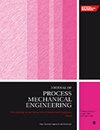旋转超声波骨钻孔过程中基于深度学习的温度预测
IF 2.2
4区 工程技术
Q2 ENGINEERING, MECHANICAL
Proceedings of the Institution of Mechanical Engineers, Part E: Journal of Process Mechanical Engineering
Pub Date : 2024-09-10
DOI:10.1177/09544089241279242
引用次数: 0
摘要
骨钻孔是骨科手术中用于治疗骨折的一种常见但关键的医疗程序。在这一过程中,由于摩擦能量的产生,骨头的温度会升高。自骨科钻孔术诞生以来,温度控制一直是一项重大挑战。如果 1 分钟内温度升高超过 47°C,就会对骨骼造成永久性损伤。为了控制温度升高,本研究提出了一种基于深度学习的鲁棒预测模型,该模型已在猪骨数据上进行了训练和测试。为了收集数据和验证结果,对猪股骨进行了大量的内部测试。旋转超声波骨钻孔是用于钻孔的加工工艺。四个自变量分别是转速、进料速度、磨料粒度和超声波振动功率,并记录每组值的温度。制作了多个深度学习模型,并就不同的误差指标进行了比较。结果发现,与其他模型相比,卷积神经网络 1D 的误差最小。深度学习模型产生的误差小于数学模型和实验模型。本文章由计算机程序翻译,如有差异,请以英文原文为准。
Deep learning-based temperature prediction during rotary ultrasonic bone drilling
Bone drilling is a common but critical medical procedure in orthopedic surgeries used to treat fractured bones. During this procedure, the temperature of the bone increases due to generation of frictional energy. Temperature control has been a major challenge in bone drilling since its foundation. If this temperature increases over 47°C for 1 min, then it can result in permanent bone damage. To control the temperature elevation this study proposes a deep learning-based robust predictive model which has been trained and tested on data from pig bones. Excessive in-house testing has been done on pig femur bones to gather data and verify the results. Rotary ultrasonic bone drilling was the machining process used for drilling. Four independent variables which were rotational speed, feed rate, abrasive grit size, and vibrational ultrasonic power were varied and the temperature for each set of values was recorded. Multiple deep learning models were made and were compared on different error metrics. It was found that convolutional neural network 1D gave the least error over other models. The error generated by deep learning models was less than mathematical and experimental models.
求助全文
通过发布文献求助,成功后即可免费获取论文全文。
去求助
来源期刊
CiteScore
3.80
自引率
16.70%
发文量
370
审稿时长
6 months
期刊介绍:
The Journal of Process Mechanical Engineering publishes high-quality, peer-reviewed papers covering a broad area of mechanical engineering activities associated with the design and operation of process equipment.

 求助内容:
求助内容: 应助结果提醒方式:
应助结果提醒方式:


